Biography
Robert Motherwell (1915-1991)
A pioneer in Abstract Expressionism, the first painting movement after World War II and the first to bring international attention to American artists, Motherwell was born in Aberdeen, Washington, in 1915, to Robert Burns Motherwell and Margaret Hogan Motherwell. His family moved to California in 1918 and the following year to Salt Lake City, Utah. In 1926, the family moved back to California where Motherwell attended the Otis Art Institute in Los Angeles on a scholarship. In 1929, he attended prep school in Atascadero, in central California, where the climate was less adverse to his asthma.
After graduating from prep school, he studied for a brief period at the California School of Fine Arts in San Francisco, although he received a BA in philosophy from Stanford University in 1937. For the next year and a half, he attended the graduate school of philosophy at Harvard University. In 1938, he left for France, where he studied French literature and devoted himself to painting.
Motherwell’s first solo exhibition was held at the GalerieDuncan in Paris. Motherwell returned to New York in 1940, where he studied art history at Columbia University before traveling to Mexico. In 1944, Peggy Guggenheim granted him a solo exhibition at her Art of This Century Gallery in New York. The following year Motherwell moved to East Hampton, on Long Island, New York, where set up a painting studio and at the same time began to write about Modern Art. In 1950, Motherwell was appointed to the graduate faculty at Hunter College in New York.
He moved back to New York City in 1953, and began to spend summers painting in Provincetown, Massachusetts. In 1970, he again moved, this time to Greenwich, Connecticut, but he continued to maintain a studio house in Provincetown. Along with Jackson Pollock, Mark Rothko, Clifford Still and William Baziotes, Robert Motherwell developed an expressionistic aesthetic that reflected the confusing and uncertain years during and immediately following World War II. At that time, the American art scene was entwined in an assortment of realist, impressionist and abstract movements. While European Modernism influenced many artists during the years following the Armory Show (the “International Exhibition of Modern Art” at the Sixty-ninth Regiment Armory) of 1913, “an impression of emptiness [and] despair prevailed.”
In the mid-1940’s Americans were confronted with an entirely new set of issues that called for an original•and uniquely American•style. An innovative new movement•Abstract Expressionism•emerged, in which artists experimented with both large scale and explosive gesture. They wedded the constructive and fluid elements of abstract form with the intensity and dynamism of the urban experience. Motherwell and his colleagues held to the conviction that a work of art serves as a vehicle for personal emancipation to which the artist is committed with his or her total character. Motherwell painted in the early 1960s a series of works of sky and water as part of an experiment the artist conducted over several years, beginning with a group of small oil he completed in Provincetown in 1961, titled Beside the Sea. He finished this episode with Lyric Suite, a monumental series of nearly six hundred ink drawings he painted on rice paper in 1965. H.H. Arnason notes that in these works the artist begins exploring the possibilities of a spontaneous, intuitively conceived brush gesture.
The Provincetown studio location inspired Motherwell to recreate the spontaneity of the waves splashing on his back porch at high tide. Outside his house, the waves crash violently against the lower wall causing streams of water to vault into the air, where they double back, creating large ovals in space. As Dore Ashton observes, the artist’s intention was to re-create and not specifically illustrate this water effect: “All of his paintings are oblique metaphors, and hold fast to the Mallarméan rule that things must be suggested or evoked, and not described.” This body of the artist’s work clearly demonstrates that Motherwell realized•and helped to define•the very heart of Modernism: that the artist is constantly re-discovering, re-inventing and re-creating the world.
Jack Flam points out that the Renaissance notion of pictorial space, in which the canvas is seen as a window, is gradually “filled in” by the impressionists and early Modernists. Paintings came to function as “a wall on which marks have been made… Motherwell’s painting, right from the beginning of his career, was conceived of in this way, as a kind of wall.”
Robert Motherwell was among the most literate and articulate of the Abstract Expressionists. He wrote extensively about modern art and in his work he became an interpreter of Modern literature. Ulysses and Finnegans Wake, by the great twentieth century writer James Joyce, have played a crucial role in the “subject” of his paintings. Motherwell often painted in a monumental scale while exploring an intimate, personal expression. His style altered between the strict, linear structure of Piet Mondrian and the more biomorpohic, amorphous expression evidenced in the work of Jean Miro.
Robert Motherwell’s work was included in the many important exhibitions of modern art during his lifetime, including Fourteen Americans; The New American Painting and Four Abstract Expressionists at the Museum of Modern Art. His paintings, drawings, prints and collages were featured in retrospective exhibitions in Fort Worth; Buffalo; Los Angeles; San Francisco; Seattle; Washington, D.C.; Amsterdam; London; Brussels; Essen and Munich, Germany; Torino, Italy; Edinburgh; Mexico City and Monterey, Mexico; and Barcelona and Madrid.
Motherwell was elected to the National Institute of Arts and Letters in 1969. In 1979, he was awarded the Gold Medal of Honor from the Pennsylvania Academy of Fine Arts, a nd in 1980, he was granted the Medal of Merit from the University of Salamanca. He received the Mayor’s Award for Arts and Culture from the City of New York in 1981. In 1985, he was elected to the American Academy of Arts and Sciences and was awarded the MacDowell Colony Medal of Honor and the Great Artists Series Award at New York University. In the following year he was elected to the American Academy of Arts and Letters and was awarded the Medalla de Ore de Belles Artes in Madrid, Spain. The French Ministry of Culture elected him Officier de L’Ordre des Arts et des Lettres in 1988. In 1989, Motherwell received the Harvard University Centennial Medal and in 1990 (the year before his death), President George H. Bush honored him by awarding him the National Medal of Arts.

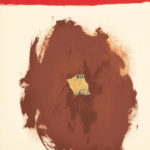 Sea Lion with Red Stripe
Sea Lion with Red Stripe
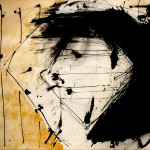 Untitled
Untitled
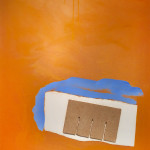 M (15 Dec 73) (sold)
M (15 Dec 73) (sold)
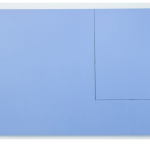 Open No, 16 in Ultramarine with Charcoal Line
Open No, 16 in Ultramarine with Charcoal Line
 Untitled
Untitled
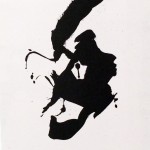 Black Gesture
Black Gesture
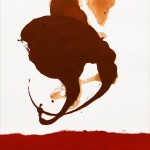 Untitled
Untitled
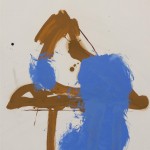 Untitled
Untitled
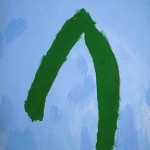 Untitled (Blue and Green)
Untitled (Blue and Green)
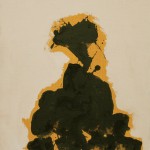 Untitled
Untitled
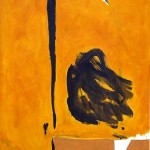 The Great Wall of China #2
The Great Wall of China #2
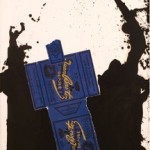 Bastos
Bastos
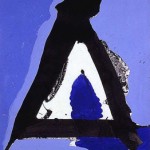 Blue and Black (The Basque Suite)
Blue and Black (The Basque Suite)
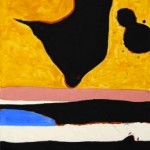 A Chord for Alban Berg
A Chord for Alban Berg
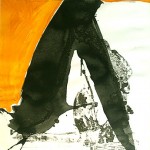 Brown and Black (The Basque Suite)
Brown and Black (The Basque Suite)
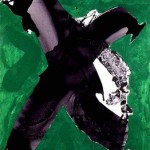 Green and Black (The Basque Suite)
Green and Black (The Basque Suite)
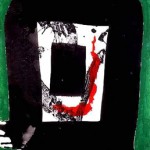 Green and Black (The Basque Suite)
Green and Black (The Basque Suite)
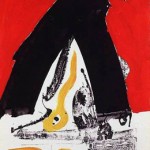 Red and Black (The Basque Suite)
Red and Black (The Basque Suite)
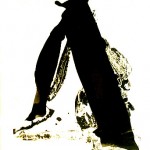 White and Black (The Basque Suite)
White and Black (The Basque Suite)
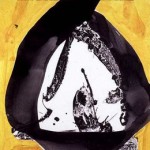 Yellow and Black (The Basque Suite)
Yellow and Black (The Basque Suite)
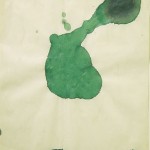 Untitled
Untitled